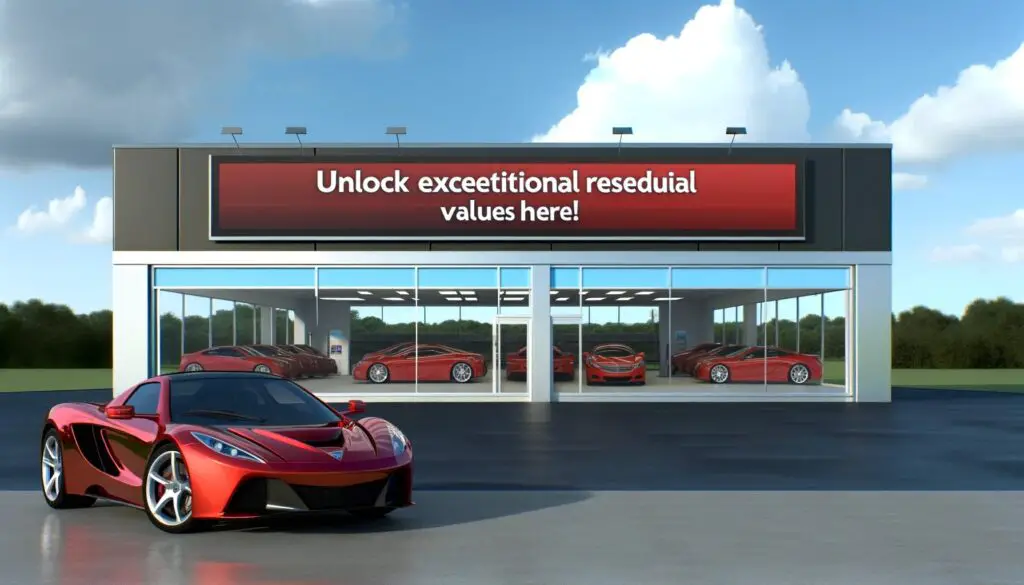In the fast-paced world of today, the desire for a new car can strike at any moment. Whether it’s the allure of the latest model, the prospect of lower monthly payments, or a change in lifestyle, the question often arises: Can you trade in a financed car for a lease? The answer is yes, but this process involves careful considerations. In this comprehensive guide, we will walk you through the ins and outs of trading in a financed car for a lease, equipping you with the knowledge needed to make an informed decision.
I. Introduction
Trading in a financed car for a lease is a viable option for those looking to transition to a new vehicle. This process allows you to exchange your current vehicle for a lease agreement, potentially offering benefits like lower monthly payments or the opportunity to drive a newer car. However, it’s crucial to recognize that this decision requires thorough evaluation, as there are complexities involved in the trade-in process.
II. The Trade-In Process
Positive Equity: A Valuable Asset
Positive equity is a term that often brings a smile to the faces of those trading in their financed vehicles for a lease. It represents a financial advantage, and here’s how it works in more detail:
Positive equity occurs when the trade-in value of your current vehicle is higher than the remaining balance on your auto loan. In simpler terms, you owe less on your car than it’s worth in the current market.
Now, let’s explore how positive equity can be used to your advantage:
1. As a Down Payment:
One of the most significant benefits of having positive equity is that it can be used as a down payment on your new lease. This down payment reduces the total cost of the lease and can have several positive effects:
- Lower Monthly Payments: By using positive equity as a down payment, you effectively reduce the amount you need to finance through your lease. As a result, your monthly payments are lower, making the transition to a lease more affordable.
- Lower Interest Costs: With a reduced principal amount, you’ll also pay less in interest over the life of your lease. This translates to additional savings.
- Improved Lease Terms: Dealerships may offer you more favorable terms, such as lower interest rates or a shorter lease duration, when you provide a substantial down payment in the form of positive equity.
2. Lease Approval and Eligibility:
Positive equity can also strengthen your eligibility for a lease. It demonstrates to the leasing company that you have a valuable asset (your trade-in) and are less likely to default on your lease payments. This can be especially helpful if you have less-than-perfect credit.
Negative Equity: A Considerable Challenge
Conversely, negative equity can be a hurdle when trading in your financed car for a lease. Negative equity means that the trade-in value of your current vehicle falls short of covering the remaining balance on your auto loan. In essence, you owe more on your car than it’s worth in the market.
Here’s a detailed look at how negative equity affects your monthly payments and the overall cost of your lease:
1. Rolling Over Negative Equity:
When you have negative equity, the dealership may offer to roll over the remaining loan balance into your new lease agreement. While this allows you to transition to a lease, it comes with some significant implications:
- Higher Monthly Payments: Rolling over negative equity effectively adds the unpaid balance of your auto loan to your new lease. This means you’re financing not only the cost of the new lease but also the remaining debt from your previous car. As a result, your monthly lease payments are likely to be higher than if you had positive equity or no existing loan.
- Extended Total Cost: The negative equity is not simply absorbed; it extends the total cost of your lease. Over the lease term, you’ll be paying not only for the new vehicle but also for the previous car’s remaining debt, including interest. This can make the overall cost of your lease substantially higher.
- Longer Commitment: Rolling over negative equity may also extend the duration of your lease agreement. This means you’ll be committed to the new lease for a more extended period, potentially impacting your long-term financial flexibility.
In summary, while negative equity doesn’t necessarily prevent you from trading in a financed car for a lease, it does come with significant financial implications. You’ll face higher monthly payments and an increased total cost over the lease term, which should be carefully considered when making your decision.
III. Potential Drawbacks
Lease Restrictions: Navigating Mileage and Wear-and-Tear Limitations
One of the key considerations when transitioning to a lease is understanding and managing the restrictions that may come with it.
1. Mileage Limitations:
Lease agreements often stipulate mileage limits, typically expressed as a maximum number of miles you can drive each year without incurring additional charges. Going over these limits can result in substantial penalties at the end of your lease term.
- Impact on Daily Life: If you have a long daily commute or frequently take road trips, you might find it challenging to stay within the mileage limits imposed by the lease. This can be a significant inconvenience and potentially costly.
- Budgetary Considerations: Exceeding your mileage limits can also lead to unexpected financial burdens, as you’ll be required to pay for each mile over the limit, often at a predetermined rate. This can significantly impact your budget.
2. Wear-and-Tear Requirements:
Lease agreements typically include guidelines on the condition of the vehicle when it’s returned at the end of the lease term. These guidelines may cover normal wear and tear, but excessive damage or neglect could result in additional charges.
- Regular Maintenance: To avoid penalties, you’ll need to ensure that you adhere to regular maintenance and keep the vehicle in good condition. Failure to do so can result in unexpected expenses when you return the leased car.
- Unpredictable Events: While normal wear and tear is expected, accidents or unforeseen events can cause more significant damage. In such cases, you may be responsible for repair costs, which can be an unwelcome surprise.
Financial Implications: The Impact of Negative Equity and Extended Costs
Trading in a financed car with negative equity can have a notable impact on your financial situation when transitioning to a lease.
1. Negative Equity Consequences:
As previously discussed, if you have negative equity in your current vehicle, the dealership may suggest rolling over the remaining loan balance into your new lease. While this can enable the transition, it has financial implications:
- Higher Monthly Payments: Rolling over negative equity increases the amount you need to finance for your new lease. This results in higher monthly lease payments, which can strain your budget.
- Extended Total Cost: The negative equity from your previous car doesn’t disappear; it extends the total cost of your lease. Over the lease term, you’ll be paying not only for the new vehicle but also for the remaining debt, including interest.
- Longer Commitment: Rolling over negative equity may also extend the duration of your lease agreement, committing you to the new lease for a more extended period. This can impact your long-term financial flexibility.
2. Budgetary Considerations:
Before trading in a financed car for a lease, it’s essential to assess the financial implications thoroughly:
- Budget Alignment: Consider whether the higher monthly payments resulting from negative equity align with your budget. Ensure that you can comfortably afford the lease without compromising your financial stability.
- Long-Term Impact: Recognize that rolling over negative equity extends the financial commitment associated with your previous car. Carefully evaluate whether this aligns with your long-term financial goals.
Lease Terms: Understanding the Fine Print
Understanding the terms and conditions of your lease agreement is paramount to a successful leasing experience. Here are some critical aspects to be aware of:
1. Mileage Limits:
Take note of the mileage limits specified in your lease agreement and ensure they align with your driving habits. If the limits are too restrictive, it may be challenging to stay within them.
2. Wear and Tear:
Familiarize yourself with the wear-and-tear requirements of the lease. Regular maintenance and care for the vehicle will help you avoid unexpected charges at the end of the lease term.
In conclusion, while trading in a financed car for a lease can offer benefits like lower monthly payments and access to a newer vehicle, it’s essential to be aware of potential drawbacks. Lease restrictions, financial implications of negative equity, and understanding lease terms are crucial aspects to consider before making this decision. Careful evaluation and planning can help you navigate these challenges successfully and ensure a smoother leasing experience.
IV. Considerations Before Trading In
Reason for Trade-In: Define Your Motivation
The first step in this process is to clearly understand your motivation for wanting to trade in your current vehicle. This motivation will serve as the foundation for your decision-making and help you align your choices with your needs and goals.
1. Desire for a Newer Car:
If you’re trading in your financed car to get a newer model, it’s essential to consider the specific features, technology, and improvements you’re seeking in the new vehicle. Identify what aspects of your current car you’d like to upgrade, whether it’s safety features, fuel efficiency, or simply a more modern design.
2. Lower Monthly Payments:
Lowering your monthly payments can be a compelling reason to transition to a lease. Consider how much you’re currently paying for your financed car and what monthly payment range would be more comfortable for your budget. Keep in mind that lease payments are typically lower than loan payments for the same vehicle.
3. Lifestyle Change:
Sometimes, life events or changes in your circumstances can prompt a desire to trade in your car. For instance, if you’re moving to a city and no longer need a car for daily commuting, transitioning to a lease may be a practical choice.
Research Car Values: Know Your Vehicle’s Worth
Obtaining independent quotes for the trade-in value of your car is a crucial step in ensuring that you get a fair deal. This research empowers you during negotiations and helps you gauge the market value of your vehicle accurately.
1. Online Valuation Tools:
Numerous online tools and websites allow you to estimate the value of your car based on factors like its make, model, year, mileage, and condition. These tools provide a ballpark figure of what you can expect as a trade-in value.
2. Appraisals from Multiple Dealerships:
To get a more precise valuation, consider seeking appraisals from multiple dealerships or automotive experts. Different dealerships may offer varying trade-in values, so this approach allows you to compare and negotiate effectively.
3. Vehicle Condition:
Be honest about the condition of your vehicle when seeking quotes. Dealerships and buyers take into account factors such as wear and tear, maintenance history, and any notable damage when determining the trade-in value.
Compare Lease Options: Shop Around for the Best Deal
Shopping around for different lease offers is a critical part of the decision-making process. Comparing lease options from various dealerships helps you identify the one that aligns best with your needs and budget.
1. Mileage Limits:
Examine the mileage limits imposed by different lease offers. Ensure that the limits match your expected annual mileage. If you exceed the limits, you may face additional charges at the end of the lease term.
2. Interest Rates:
Interest rates on lease agreements can vary, impacting your monthly payments. Compare the rates offered by different dealerships to find the most competitive option.
3. Buyout Options:
Some lease agreements provide the option to purchase the vehicle at the end of the lease term. If this is important to you, investigate the buyout terms offered by different dealerships to see which one provides the flexibility you desire.
In conclusion, before trading in your financed car for a lease, consider your motivations, research the trade-in value of your vehicle, and thoroughly compare lease options. By doing so, you’ll be better equipped to make an informed decision that aligns with your goals, budget, and lifestyle.
V. Conclusion
In conclusion, trading in a financed car for a lease can be a beneficial choice for individuals seeking to enhance their vehicle or lower their monthly financial commitments. However, it is essential to recognize that this decision is not without its intricacies and potential challenges. To ensure you make the most informed and advantageous decision for your circumstances, follow these key steps:
1. Clarify Your Motivation:
Begin by clearly defining your reasons for considering a trade-in. Whether your goal is to enjoy the features of a newer car, reduce monthly expenses, or adapt to a change in lifestyle, having a precise understanding of your motivations will guide your decision-making process.
2. Research the Trade-In Value:
To guarantee a fair and equitable trade-in, it is vital to research and ascertain the trade-in value of your current vehicle. Utilize online valuation tools and seek appraisals from various dealerships to acquire a comprehensive estimate. Remember to be transparent about your vehicle’s condition and history during this evaluation.
3. Compare Lease Options:
Comparing lease options from different dealerships is a fundamental aspect of making a well-informed decision. Pay particular attention to the following factors:
- Mileage Limits: Ensure that the mileage limits align with your anticipated annual driving habits to avoid excess mileage charges.
- Interest Rates: Evaluate the interest rates offered, as they directly affect your monthly payments.
- Buyout Options: If you have an interest in purchasing the vehicle at the end of the lease term, examine the buyout terms provided by different dealerships.
By carefully considering these elements, you can identify the lease agreement that best suits your unique requirements and financial situation.
In summary, while trading in a financed car for a lease presents opportunities for vehicle upgrades and reduced financial burdens, it is essential to navigate this process with thorough research and understanding. By following the steps outlined in this guide, you empower yourself to make a well-informed decision that aligns with your goals and ensures a successful transition.
VI. Frequently Asked Questions (FAQs)
- Can I trade in a financed car if I still owe money on it?
- Yes, you can trade in a financed car, even if you still owe money on it. The process involves settling your existing auto loan through either payoff or rolling over the balance into your new lease.
- How does positive equity affect my lease payments?
- Positive equity can be used as a down payment on your new lease, reducing your monthly payments and making the transition more affordable.
- What should I do if my trade-in value doesn’t cover my loan?
- If your trade-in value falls short of covering your loan, the remaining balance can be rolled over into your new lease, resulting in higher monthly payments.
- Are there any specific lease restrictions I should be aware of?
- Yes, some leases come with restrictions such as mileage limitations and wear-and-tear requirements. Reviewing your lease agreement is crucial to understanding these limitations.
- What are the financial implications of rolling over negative equity into a lease?
- Rolling over negative equity can lead to higher monthly payments and an increased total cost of your lease. Assess these implications before making a decision.
- How can I find out the mileage limitations and wear-and-tear restrictions on a lease?
- You can find this information in your lease agreement. It’s essential to thoroughly review the terms to avoid unexpected charges.
- Should I trade in my financed car for a lease if I’m looking for a newer car?
- Trading in your financed car for a lease can be a good option if you want a newer vehicle and can benefit from lower monthly payments. Assess your financial situation and goals to determine if it’s the right choice for you.
- How do I research the trade-in value of my car independently?
- To research the trade-in value of your car independently, you can use reputable online resources, consult automotive valuation guides, or get quotes from multiple dealerships.
- What should I look for when comparing different lease offers?
- When comparing lease offers, consider factors such as mileage limits, interest rates, down payment requirements, and buyout options. Choose the offer that aligns with your needs and budget.
- Is it always a good idea to trade in a financed car for a lease?
- Whether trading in a financed car for a lease is a good idea depends on your individual circumstances and goals. It’s essential to assess the trade-off between lower monthly payments and potential long-term costs.
VII. Additional Resources
For those seeking further information and in-depth insights into the process of trading in a financed car for a lease, we recommend exploring the following reputable external sources:
- Can You Trade In a Financed Car? | Edmunds: Edmunds is a trusted automotive resource that provides comprehensive guides and articles on various aspects of car ownership, including trading in financed vehicles for leases. Their insights can offer valuable perspectives and guidance.
- Should You Trade In Your Car for a Lease? | Consumer Reports: Consumer Reports is renowned for its unbiased reviews and expert advice on a wide range of consumer products, including automobiles. Their analysis on trading in your car for a lease can provide essential insights.
- Trading in Your Financed Car for a Lease | Kelley Blue Book: Kelley Blue Book is a well-known resource for vehicle valuation and automotive information. Their expertise in car pricing and market trends can assist you in making informed decisions regarding your trade-in.
Arming yourself with knowledge from these respected sources will enhance your understanding of the complexities involved in trading in a financed car for a lease. This knowledge empowers you to navigate the process with confidence and make choices that align with your specific needs and financial circumstances.





